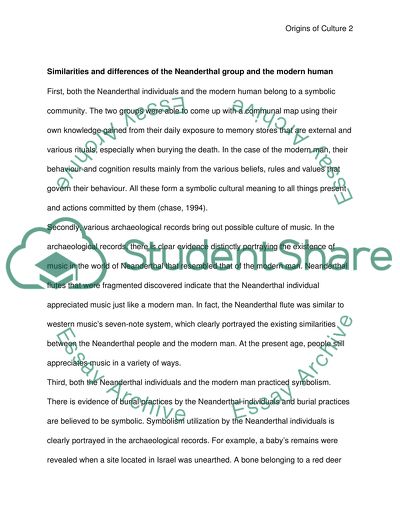Cite this document
(“Origins of Culture. Similarities and differences of the Neanderthal Essay”, n.d.)
Retrieved from https://studentshare.org/sociology/1432917-origins-of-culture-similarities-and-differences-of-the-neanderthal-group-and-the-modern-human
Retrieved from https://studentshare.org/sociology/1432917-origins-of-culture-similarities-and-differences-of-the-neanderthal-group-and-the-modern-human
(Origins of Culture. Similarities and Differences of the Neanderthal Essay)
https://studentshare.org/sociology/1432917-origins-of-culture-similarities-and-differences-of-the-neanderthal-group-and-the-modern-human.
https://studentshare.org/sociology/1432917-origins-of-culture-similarities-and-differences-of-the-neanderthal-group-and-the-modern-human.
“Origins of Culture. Similarities and Differences of the Neanderthal Essay”, n.d. https://studentshare.org/sociology/1432917-origins-of-culture-similarities-and-differences-of-the-neanderthal-group-and-the-modern-human.


